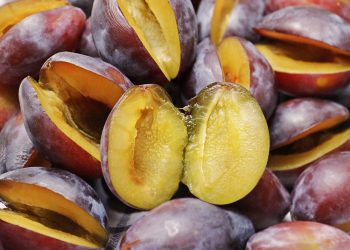Sustainable eating isn’t just a trend; it’s a lifestyle choice that can transform your body, your community, and our planet. This approach to food emphasizes local, seasonal, and eco-friendly choices that nourish you while respecting nature. If you’ve been looking for ways to make a positive impact with your plate, you’re in the right place. Here are 10 easy ways to embrace sustainable eating today that you can start implementing right away.
Contents
Why Sustainable Eating Matters
Sustainable eating plays a crucial role in reducing your carbon footprint, conserving natural resources, and supporting local economies. By prioritizing foods that are grown and harvested responsibly, you’re not just feeding yourself; you’re joining a movement that seeks to preserve the Earth for future generations.
Let’s dive into these ten practical tips that will help you embrace sustainable eating without feeling overwhelmed.
1. Shop Local
When you buy from local farmers, you’re not just purchasing food; you’re investing in your community. Local produce is often fresher, tastier, and more nutrient-rich. Plus, you support farmers who practice sustainable agriculture.
- Find farmers’ markets in your area for fresh, seasonal options.
- Join a Community Supported Agriculture (CSA) program to receive regular boxes of local produce.
2. Choose Seasonal Foods
Eating in sync with the seasons means you’re eating what’s naturally available in your region. Seasonal foods are generally more flavorful and require fewer resources to grow.
- Check out seasonal produce guides to know what’s in season when.
- Experiment with seasonal recipes to make the most of fresh ingredients.
3. Reduce Meat Consumption
The production of meat has a significant environmental impact. By cutting back on meat, you can lower greenhouse gas emissions and conserve water.
- Try Meatless Mondays—a fun way to explore plant-based meals.
- Incorporate more beans, lentils, and tofu into your diet. These are not only sustainable but also packed with protein.
4. Grow Your Own Food
There’s something incredibly satisfying about eating food you’ve grown yourself. Whether it’s herbs on your windowsill or a full vegetable garden, homegrown produce is sustainable and delicious.
- Start small with potted herbs like basil or mint.
- Consider a community garden if you don’t have space at home.
5. Choose Organic and Non-GMO
Organic farming avoids synthetic pesticides and fertilizers, which can harm the environment and your health. Non-GMO foods contribute to biodiversity and are often more sustainable.
- Look for certified organic labels to ensure you’re making a responsible choice.
- Educate yourself on GMOs and their impact on agriculture.
6. Minimize Food Waste
Food waste is a significant issue—approximately one-third of all food produced globally is wasted. You can do your part by planning meals and using leftovers creatively.
- Practice meal prepping to avoid overbuying.
- Get creative with leftovers—turn them into soups or stir-fries.
7. Support Sustainable Brands
Many brands are committed to sustainability. By choosing to buy from these companies, you’re supporting practices that prioritize the planet.
- Research brands that focus on eco-friendly practices.
- Look for certifications like Fair Trade or Rainforest Alliance.
8. Eat More Plant-Based Meals
Plant-based diets are not only healthy; they’re also more sustainable than meat-heavy diets. By focusing on fruits, vegetables, grains, and legumes, you can make a significant impact.
- Try new plant-based recipes to keep meals exciting.
- Experiment with meat alternatives to find what you enjoy.
9. Be Mindful of Packaging
Single-use plastics and excessive packaging contribute to pollution. Look for bulk items or products with minimal packaging to reduce your plastic footprint.
- Bring reusable bags and containers when shopping.
- Choose products in glass or cardboard over plastic when possible.
10. Educate Yourself and Others
Knowledge is power. The more you learn about sustainable eating, the more effective you can be in making choices that benefit your health and the environment.
- Follow sustainability blogs or podcasts to stay informed.
- Share your journey with friends and family to inspire them to embrace sustainable eating too.
Bottom Line
Embracing sustainable eating is not just about changing what’s on your plate; it’s about transforming how you think about food and its impact on the world around you. By incorporating these 10 easy ways to embrace sustainable eating today, you’ll not only nourish your body but also contribute to a healthier planet.
So, what will you try first? Each small step counts, and together, we can make a significant impact.
FAQ
What is sustainable eating?
Sustainable eating focuses on food choices that are healthful for both individuals and the environment, prioritizing local, seasonal, and ethically sourced foods.
How can I start eating sustainably on a budget?
Buy seasonal produce, shop at local farmers’ markets, and reduce meat consumption to lower costs while embracing sustainable practices.
Is sustainable eating healthier?
Yes, sustainable eating often emphasizes whole foods, fruits, and vegetables, which can lead to improved health outcomes.
Embrace this journey towards sustainable eating today, and feel the difference in your life, your health, and the world around you.
Get Your FREE Natural Health Guide!
Subscribe now and receive our exclusive ebook packed with natural health tips, practical wellness advice, and easy lifestyle changes — delivered straight to your inbox.














